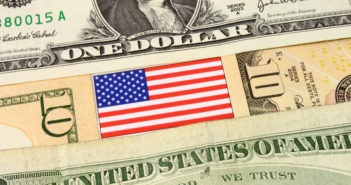The Federal Reserve announces its first decision of the year on Wednesday, January 30th, at 19:00 GMT. Fed Chair Jerome Powell will hold a press conference at 19:30 GMT.
From a hawkish hike to preaching patience
Back in December, the Jerome Powell raised rates as expected and also lowered the forecast for 2019: three hikes instead of two. This may seem like a “dovish hike,” but markets had expected a deeper downgrade of interest rate projections. The US Dollar rose on the “hawkish hike” narrative.
Stock markets were more impacted by a comment that Powell made in the accompanying presser. He said that the program to reduce the balance sheet would continue “autopilot.”
Quite a few things changed since mid-December. Powell began talking about having “patience” about raising rates. His words were echoed by his colleagues. Atlanta Jerome Powelleven suggested the Fed could cut rates.
Powell also changed his tack on the balance sheet, but first, let us explain the importance.
Why the balance sheet matters
The Fed is gradually shrinking the size of its balance sheet by not reinvesting all the proceeds of maturing bonds. In other words, the central bank is withdrawing money from markets or undoing the Quantitative Easing program. This new Quantitative Tightening scheme means less money in equitiesand fewer dollars, thus a higher value for the greenback.
Given signs of an economic slowdown, some had expected the Fed not only to stop raising rates but also stop reducing the balance sheet.
And also on the balance sheet, the Fed Chair said the plan could be modified, straying from his “autopilot” comments. While the dollar dipped on the comment, it was seen as paying lip service to such a theoretical option, nothing immediate.
And then came the Wall Street Journal report on Friday. The highly-regarded publication said that the Fed is considering cutting short the plan to reduce the balance sheet. While the sources talked about technical reasons, such a move has significant market implications.
The news, coming five days ahead of the FOMC announcement, had two effects: the first is that the greenback dropped as it did after Powell’s comments. The second effect is that the topic became prominent ahead of the decision.
What to watch out for in the meeting
The Fed is not expected to raise rates. It has a “gradual” approach, and it does not make a policy change without accompanying forecasts. The statement will likely repeat known messages. The Fed is content with the excellent employment situation, sees stable inflation, and is somewhat concerned about housing and the global economy.
They will likely continue talking about normalizing policy but probably provide no hints about the March meeting. Markets will assume that the “patient” approach means no change in March. The focus will return to interest rates in that March meeting when a new dot-plot is announced.
This leaves the stage to Powell’s press conference and the balance sheet. It is the first time that the Fed Chair holds a presser without new forecasts and after the WSJ piece, there is no doubt that he will talk about the topic, either confronting it directly or responding to reporters’ questions.
How will the USD move? 3 scenarios
1) An announcement in the statement
If the Fed takes a step forward and announces it is considering a change to the balance sheet reduction policy already in the statement, the US Dollar will likely fall immediately. This is certainly not priced in.
Powell can then provide details and may change the picture. He may smooth the message, and say they are just checking it. However, moving from a dismissive comment to a stated policy is a significant change.
Probability: Low
USD Effect: Very negative
2) Powell will say they are checking it
If the Fed Chair addresses the balance sheet in the prepared remarks or says they are examining the option of changing the balance sheet in response to a question, it will also mark an official change in policy. There is a difference between talking about it in a conference and saying it out loud.
However, this is partially priced in and will not be a huge surprise. The US Dollar may dip but recover afterward. We may see a “buy the rumor, sell the fact” response.
Probability: High.
USD Effect: Slightly down initially
3) Powell will mostly dismiss it
He is unlikely to repeat the “autopilot” comments, as he has already opened the door to changes, but he may get close.
If Powell responds to a question about it by saying the Fed “may” or “could” look at changing the balance sheet reduction plan, markets will see this as a distant option once again. It will basically be a denial of the WSJ report that the Fed is mulling the possibility seriously.
In this case, the dollar will likely rise on the surprise and stocks could suffer. Markets still need some dovishness from the Fed.
Probability: Medium.
USD Effect: Positive.
Conclusion
The balance sheet reduction program is central to the January 2019 decision. If the Fed takes a step forward, it is harmful for the dollar. Ignoring the media reports could send the greenback higher.
Get the 5 most predictable currency pairs
Why the Fed is all about the balance sheet and three scenarios for the outcome
